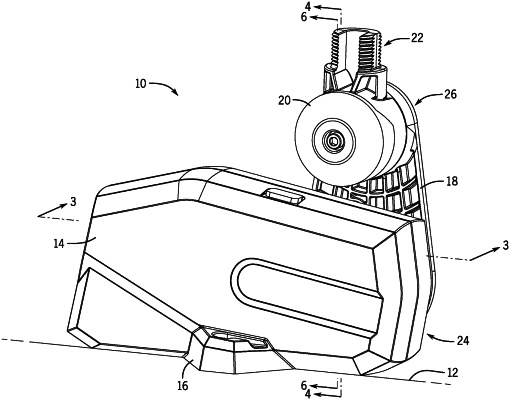| CPC B63B 17/00 (2013.01) [F16M 13/022 (2013.01); H02K 7/1166 (2013.01); H02P 23/24 (2016.02); F16M 11/2021 (2013.01)] | 10 Claims |

|
1. An assembly for extending and retracting an elongated peripheral device with respect to a supporting surface of a marine vessel, the assembly comprising:
a housing configured to be coupled to the supporting surface;
an arm pivotably coupled to the housing;
an electric motor located in the housing and having an output shaft coupled to the arm, the electric motor configured to change an orientation of the housing and the arm with respect to one another;
a controller configured to control power provided to the electric motor; and
a mount coupled to the housing, the mount configured to support the peripheral device;
wherein the assembly is configured such that as the electric motor changes the orientation of the housing and the arm with respect to one another, the mount and the peripheral device are simultaneously extended or retracted with respect to the supporting surface; and
wherein the controller is configured to:
vary the power provided to the electric motor in response to determining that the peripheral device has encountered an obstacle while being extended or retracted with respect to the supporting surface;
reverse a direction of the electric motor's output shaft in response to determining that the peripheral device has encountered the obstacle while being extended or retracted with respect to the supporting surface; and
not to reverse the direction of the electric motor's output shaft in response to determining that the mount is within a threshold distance of being fully extended or fully retracted with respect to the supporting surface.
|